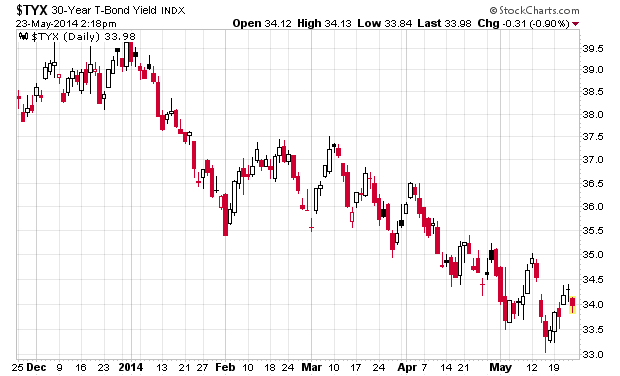Just put yourself in the shoes of this person – your pension plan has an expected rate of return on plan assets of 7.1% and your actuarial balance is 90% of funded levels for your plan because of weak market performance.
I picked 7.1% because this is an example of a large-scale pension plan (the British Columbia government, for example – others may vary).
How do you allocate to get a 7.1% return?
Perhaps investing in high quality fixed income – even if you’re the world’s best bond trader and get a 200bps spread over Canadian government bonds on A and AA paper (which you are functionally restricted to in your pension plan), you are still well below the 7.1% threshold.
In fact, simple math would state that if you are 50% allocated in high-quality fixed income (let’s just use Genworth MI’s latest A/AA bond offering as an example – 10 years and 4.24% yield), you still need an allocation of equity that would net you 9.96% to “break even” on your 7.1% expected rate of return.
So obviously the deeper the portfolio dives into high-quality fixed income, the higher the return it needs from other components, which would likely come from equity and further up the risk spectrum.
Further up the risk spectrum are BBB bonds, which is the lowest rated bonds that most pensions are allowed to invest in. The yield premium you get on these versus A/AA investments is presently not much better (a lot of low quality debt is trading as if it is a guarantee), but you incur the risk of defaults down the line (in addition to illiquidity when you’re trying to unload them).
Finally, any bond trader will point out to a yield graph and show you that long-duration bonds are trading at high levels (low yields). Probably the reason why most high-quality fixed income continues to trade at low yields is that whenever yields do pop up, they are snapped up by institutional managers that want to fill in that income component of their asset allocation models.
The point is that while historically you could have run a pension plan in the 1980’s to about the year 2005-ish primarily investing in long-dated high quality fixed income securities, today that is clearly not possible.
The other component is typically equities, but an institutional manager will look at the graph of the S&P 500 (trading at all-time highs never seen before in the index) and ask themselves whether they can squeeze more than their 7.1% threshold out of the index when it is trading so high. Nope! Can’t invest here! Additionally, lower sub-indicies such as the S&P 400, and the smallcap S&P 600 are less liquid. Just as an example, the S&P Midcap 400 index has a market capitalization of about $1,600 billion at present. For smaller players this is liquid, but for larger players (e.g. if you have a $200 billion pension plan), it would move the market.
So you move up the risk spectrum, get into junkier debt issues and “alternative investments”, the latter of which is a codeword for illiquid and speculative. They also are cursed by the fact that there is no active market trading on things such as toll roads and other public-private partnerships, and that these investment decisions have to be made very, very carefully made in terms of valuation and expected business results. Still, institutions that need to do higher-yielding investments in size have to venture into these speculative ventures.
So all-in-all, the low-yield environment we are currently in is a function of yield demand – institutions around the world are starving for yield and they are willing to take more capital risk to achieve it.
The smaller individual investor, however, should figure out where the demand is not located and there should be a higher probability of value being located at such points.

